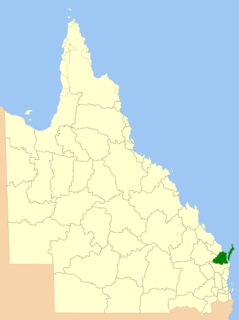
Maryborough Courthouse is a heritage-listed courthouse at 170 Richmond Street, Maryborough, Fraser Coast Region, Queensland, Australia. It was designed by Francis Drummond Greville Stanley and built in 1877 by John Thomas Annear for the Queensland Government. It is also known as Maryborough Court House and Government Offices. It was added to the Queensland Heritage Register on 21 October 1992.

Maryborough Central State School is a heritage-listed state school at 471 Kent Street, Maryborough, Fraser Coast Region, Queensland, Australia. It was built from 1875 to 1953. It is also known as Central State School for Boys, Central State School for Girls, and Central State School for Infants. It was the first state school in Maryborough and was established with separate girls and boys departments. It is the oldest public school in Queensland. It was added to the Queensland Heritage Register on 31 October 1994.
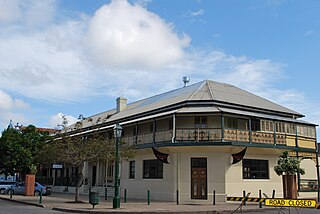
Customs House Hotel is a heritage-listed hotel at 116 Wharf Street, Maryborough, Fraser Coast Region, Queensland, Australia. It was built in 1868. It was added to the Queensland Heritage Register on 21 October 1992.
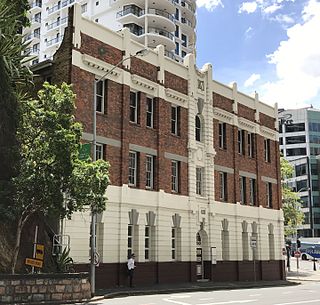
Castlemaine Perkins Building is a heritage-listed former warehouse at 418-420 Adelaide Street, Brisbane City, City of Brisbane, Queensland, Australia. It was designed by Thomas Ramsay Hall and built from 1918 to 1919 by George Albert Baumber and was extended in 1928 to 1929. It is also known as Castlemaine Brewery and Quinlan, Gray & Co Building. It was added to the Queensland Heritage Register on 6 March 2009.

Australian Joint Stock Bank Building is a heritage-listed former bank and now commercial building at 331 Kent Street, Maryborough, Fraser Coast Region, Queensland, Australia. It was designed by Francis Drummond Greville Stanley and built in 1882 by French & Crystall. It is also known as Department of Primary Industries Building, Union Bank, and the Office of Sport and Recreation. It was added to the Queensland Heritage Register on 21 October 1992.

Eskdale is a heritage-listed detached house at 53 Pallas Street, Maryborough, Fraser Coast Region, Queensland, Australia. It was built from c. 1864 to 1920s. It was added to the Queensland Heritage Register on 21 October 1992.

Post Office Hotel is a heritage-listed hotel at Bazaar Street, Maryborough, Fraser Coast Region, Queensland, Australia. It was designed by Victor Emmanuel Carandini and built in 1889 by Mr Murray. It was added to the Queensland Heritage Register on 21 October 1992.

Gataker's Warehouse Complex is a heritage-listed warehouse at 106-108 Wharf Street & 310 Kent Street, Maryborough, Fraser Coast Region, Queensland, Australia. It was designed by James Buchanan and built in 1879 by F Kinne and Jack Ferguson. It is also known as Graham and Gataker, Netterfield and Palmer, Rutledge and Netterfield, and Gatakers Warehouse. It was added to the Queensland Heritage Register on 21 October 1992.

Maryborough Heritage Centre is a heritage-listed former bank building at 164 Richmond Street, Maryborough, Fraser Coast Region, Queensland, Australia. It was designed by George Allen Mansfield and James Cowlishaw and built in 1877 for the Bank of New South Wales. It is also known as National Parks and Wildlife Service Headquarters, Post Master General's Department, and Telecom Building. It was added to the Queensland Heritage Register on 21 October 1992.

Maryborough Government Offices Building is a heritage-listed office building at 123 Wharf Street, Maryborough, Fraser Coast Region, Queensland, Australia. It was designed by Gilbert Robert Beveridge and Raymond Clare Nowland and built in 1940 by relief work. It is also known as State Government Insurance Offices and State Government Offices. It was added to the Queensland Heritage Register on 21 October 1992.
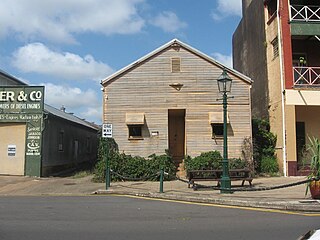
Maryborough Waterside Workers' Hall is a heritage-listed former trade union building at 96 Wharf Street, Maryborough, Fraser Coast Region, Queensland, Australia. It was built in 1918. It was added to the Queensland Heritage Register on 9 July 1993.

Queensland National Bank is a heritage-listed former bank building at 327 Kent Street, Maryborough, Fraser Coast Region, Queensland, Australia. It was designed by Frederic Herbert Faircloth and built from 1914 to 1915 by James Treevan and N C Steffensen. It is also known as Burrum Shire Council Chambers and Woodstock House. It was added to the Queensland Heritage Register on 21 October 1992.
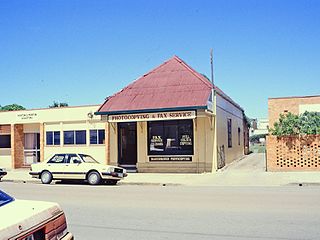
Whart Street Shop is a heritage-listed shop at 134 Wharf Street, Maryborough, Fraser Coast Region, Queensland, Australia. It was built in 1869. It was added to the Queensland Heritage Register on 21 October 1992.

Commercial Bank of Sydney is a heritage-listed former bank building at 191–193 Bourbong Street, Bundaberg Central, Bundaberg, Bundaberg Region, Queensland, Australia. It was designed by George Allen Mansfield and built in 1891. It is also known as the National Australia Bank. It was added to the Queensland Heritage Register on 21 October 1992.

The Rockhampton Customs House is a heritage-listed customs house at 208 Quay Street, Rockhampton, Rockhampton Region, Queensland, Australia. It was built from 1899 to 1900 by Caskie and Thompson. It was added to the Queensland Heritage Register on 7 February 2005.

Mackay Customs House is a heritage-listed customs house at 31 River Street, Mackay, Mackay Region, Queensland, Australia. The design is attributed to John Smith Murdoch and the builder was MS Caskie. It was completed in April 1902. It was added to the Queensland Heritage Register on 7 February 2005.

Townsville Customs House is a heritage-listed former customs house at Wickham Street, Townsville CBD, City of Townsville, Queensland, Australia. It was designed by George David Payne and built from 1900 to 1902 by Crawford & Cameron. It was added to the Queensland Heritage Register on 7 February 2005.

Cairns Customs House is a heritage-listed former customs house and now restaurant at 6A-8A Abbott Street, Cairns, Cairns Region, Queensland, Australia. It was designed by Robert Henry Bowen and built from 1936 to 1937 by Watkins & Deal. It was added to the Queensland Heritage Register on 21 October 1992.

